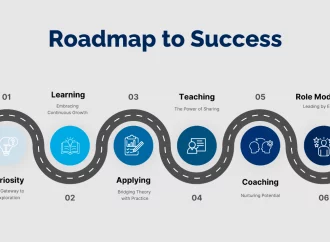The First Republic faced a daunting challenge: how to maintain stability and prosperity in the midst of rising interest rates and political uncertainty. But through ingenuity, determination, and a little bit of luck, this young nation managed to overcome its succession crisis and emerge stronger than ever before. In this blog post, we’ll explore the
The First Republic faced a daunting challenge: how to maintain stability and prosperity in the midst of rising interest rates and political uncertainty. But through ingenuity, determination, and a little bit of luck, this young nation managed to overcome its succession crisis and emerge stronger than ever before. In this blog post, we’ll explore the innovative strategies that helped the First Republic navigate these turbulent times – and what lessons we can learn from their success today. So buckle up, history buffs – it’s time for a deep dive into one of America’s most fascinating periods!
Background
Background
The First Republic is one of the most successful democracies in the world. It has weathered many political and economic challenges, including a succession crisis in a rising rate environment. In this blog post, we will explore how the First Republic managed to overcome its succession crisis and maintain its success.
The Succession Crisis in the First Republic
In 1979, Chile experienced a succession crisis following the death of Salvador Allende. The military staged a coup d’état and replaced Allende with General Augusto Pinochet. This event marked the beginning of a long period of instability and dictatorship in Chile.
The First Republic was faced with a similar succession crisis in 1992. Following the death of President Joaquín Balaguer, his eldest son, Eduardo Balaguer, failed to secure enough votes to become president. This led to a number of political intrigues and eventually culminated in another military coup d’état which installed General Carlos Menem as president.
Both the Pinochet and Menem regimes were characterized by high levels of corruption and authoritarianism. As a result, both regimes were unpopular with large sections of Chilean society. In addition, both administrations faced significant financial challenges due to the rising rate environment that was emerging at that time.
How did the First Republic manage to overcome its succession crisis?
One important factor that helped stabilise the First Republic during its succession crisis was its strong institutional foundations. The constitution introduced after Allende
The Political Environment
The First Republic was founded on the premise of avoiding a succession crisis. The Founding Father, Dr. Mohammad Mosaddeq, believed that if the monarchy were to fall, it would lead to chaos and social unrest. To prevent this from happening, he created a democratically-run republic with a strong president.
Since its establishment, the First Republic has faced several succession crises. The first came in 1953 when Dr. Mosaddeq was arrested and later executed for treason against the Shah of Iran. This event led to a power struggle between rival factions within the republican government and created uncertainty about who would be able to take control in case of another crisis.
In 1978, after years of political instability and economic decline, Iraq descended into full-blown civil war. This conflict was caused by competing interest groups within the Iraqi government vying for power and control over resources. As a result, the country became fractured and the military seized control of key areas. This situation presented a serious risk to the stability of the First Republic because it was unclear who would be able to bring order back to Iraq once the fighting had stopped.
Fortunately, these crises were managed successfully thanks to strong presidential leadership and effective policymaking mechanisms. For example, President Saddam Hussein developed close relationships with key figures in different factions in order to build trust and co-operation during times of crisis. This strategy allowed him to consolidate power after defeating his opponents militarily in 1991.
Despite these successes, there is still risk
The Political Landscape
The First Republic was founded in 1849 after the Mexican-American War. It experienced a succession crisis due to the death of President General Ignacio Comonfort only two years into his term. The new president, Benito Juárez, successfully navigated the political landscape and managed to secure a strong legacy for himself. In order to overcome its succession crisis, the First Republic relied on institutional continuity and adhered to a strict rule of law. Additionally, Juárez demonstrated an ability to work effectively with other institutions such as Congress and the military.
How the First Republic Managed to Overcome Its Succession Crisis in a Rising Rate Environment
The success of the First Republic was in large part due to their effective management of their succession crisis. In the early years of the republic, there were many potential candidates for the presidency and it became increasingly difficult to choose a leader who would be able to maintain stability. To avoid a civil war, the government created a system where multiple candidates could run and receive support from different factions in society. This allowed them to choose a candidate who was able to win over popular support and keep the country unified. By choosing a candidate who was able to win over the majority of people, they were able to avoid any potential conflict and keep the republic alive.
Lessons Learned
The First Republic managed to overcome its succession crisis in a rising rate environment by instilling institutional mechanisms that would allow for smooth transfers of power. In particular, the constitution created an electoral college that would choose the president and vice president based on a vote of both houses of Congress. This system ensured that no individual could monopolize power and that the president would have to work with Congress to pass legislation. The system also allowed for quick transitions of power in the event of a death or resignation, which helped decrease uncertainty and maintain stability during times of political change.





















Leave a Comment
Your email address will not be published. Required fields are marked with *